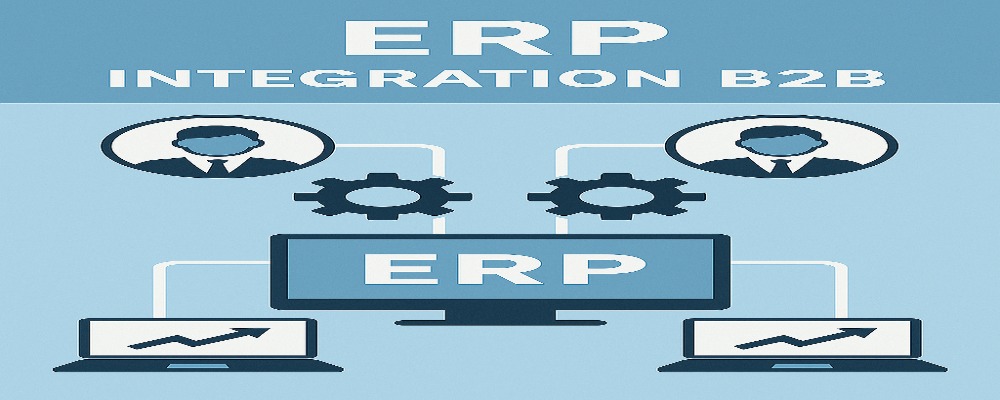In today’s competitive environment, companies are continually asking how to keep pace with rapid technological changes while meeting evolving customer expectations. Two terms that often emerge in business discussions are digital strategy and digital transformation. Although these concepts might seem similar at first glance, they represent distinct approaches to integrating technology into business operations. This article offers a comprehensive yet concise exploration of both subjects, highlighting their benefits, potential pitfalls, and practical considerations. We’ll also include expert insights, frequently asked questions, and real reviews to help you navigate your decision-making process.
Defining the Core Concepts
Before diving into the differences and overlaps between digital strategy and digital transformation, it’s essential to understand what each term means.
Digital Strategy
Digital strategy is a forward-looking blueprint that outlines how a business can leverage digital tools and channels to achieve its overarching goals. It focuses on:
- Planning and Vision: Mapping out clear objectives aligned with business growth.
- Customer Engagement: Using digital channels to better understand and connect with customers.
- Competitive Advantage: Identifying opportunities to differentiate your brand in a crowded market.
- Efficiency: Streamlining operations by incorporating tech-based solutions.
In essence, digital strategy provides the “what” and “why” behind a company’s digital initiatives. It helps organizations decide which technologies to adopt, how to deploy resources, and how to measure success.
Digital Transformation
Digital transformation, on the other hand, is the comprehensive process of integrating digital technology into all areas of a business, resulting in fundamental changes to how the organization operates and delivers value. Its key components include:
- Technological Adoption: Implementing new systems, software, and platforms.
- Process Overhaul: Redesigning business processes to improve speed and agility.
- Cultural Shift: Fostering a mindset that embraces change and continuous improvement.
- Data-Driven Decision Making: Leveraging insights from data analytics to guide strategic moves.
Unlike digital strategy, which focuses on planning and goals, digital transformation is about execution and change management. It is the “how” and “what now” of adopting new technologies throughout the organization.
Key Differences and Overlaps
Understanding the differences between digital strategy and digital transformation is vital for any business leader. Below is a side-by-side comparison using a clear list format:
- Focus:
- Digital Strategy: Centers on creating a roadmap for growth through digital means.
- Digital Transformation: Focuses on implementing changes that reinvent business processes and models.
- Scope:
- Digital Strategy: Often limited to defining goals, selecting technologies, and planning initiatives.
- Digital Transformation: Encompasses a wide-ranging overhaul that involves technology, processes, and cultural changes.
- Timeframe:
- Digital Strategy: Typically involves medium- to long-term planning.
- Digital Transformation: Can be a multi-year journey involving continuous iterations.
- Outcome:
- Digital Strategy: Aims to set the direction for digital initiatives.
- Digital Transformation: Seeks to deliver tangible changes in business performance and customer experience.
People Are Always Asking…
A common query we encounter is: “How do I know if my business needs a digital strategy, digital transformation, or both?” The answer depends on where your organization stands and where you want to be in the near future:
- Stagnant Processes: If your operations are outdated or inefficient, digital transformation may be the answer.
- Market Expansion: If your goal is to expand your digital reach and improve customer engagement, a robust digital strategy is essential.
- Both: For many businesses, a well-crafted digital strategy lays the groundwork for successful digital transformation. The strategy defines the goals and vision, while the transformation brings those ideas to life.
Taking a measured approach helps you invest effectively and avoid the pitfalls associated with either undertaking when the groundwork isn’t properly established.
For a practical look at how digital transformation is reshaping the public sector, explore our insights on digital transformation in government.
Expert Insight: Tamer Badr on Digital Evolution
Tamer Badr, the owner of Singleclic, provides a refreshing perspective on the discussion. He stresses the importance of a balanced approach by saying:
“A clear digital strategy provides direction and clarity, but true digital transformation demands a company-wide commitment to change. It’s not enough to plan; you must also be ready to execute and adapt. At Singleclic, we’ve seen that the most rewarding journeys begin with a visionary strategy and evolve through hands-on transformation.”
— Tamer Badr, Owner of Singleclic
Badr’s insight reminds us that while strategic planning is critical, the real value lies in successfully managing the change process across all facets of the business.
The Benefits and Potential Drawbacks
Both digital strategy and digital transformation offer significant benefits, but they also come with challenges that must be managed carefully.
Benefits
Digital Strategy:
- Focused Direction: Provides clear goals and measurable objectives.
- Cost Efficiency: Helps allocate resources more effectively.
- Enhanced Customer Engagement: Identifies key channels to reach your audience.
- Competitive Positioning: Distinguishes your brand in a competitive market.
Digital Transformation:
- Process Optimization: Streamlines operations and improves efficiency.
- Innovation: Encourages the use of cutting-edge technologies.
- Agility: Builds a more responsive and flexible organization.
- Better Data Utilization: Strengthens decision-making with real-time insights.
Potential Drawbacks
Digital Strategy Drawbacks:
- Implementation Gaps: The strategy might not be fully executed if buy-in across the organization is lacking.
- Short-Term Focus: Without proper execution, the strategy may focus too narrowly on immediate gains.
- Resource Misallocation: Investments might not yield expected returns if not aligned with true business needs.
Digital Transformation Drawbacks:
- High Investment Costs: Upfront and ongoing costs can be significant.
- Cultural Resistance: Employees may resist changing long-established processes.
- Complexity: Integrating new systems into existing ones can lead to complications.
- Execution Risk: Without a robust execution plan, transformative initiatives can stall or fail.
These points underscore the need for a clear understanding of your organization’s priorities before undertaking any major digital initiatives.
Structured Comparison: Quick Reference Lists
Top 5 Considerations for Digital Strategy:
- Define clear objectives and KPIs.
- Assess market trends and customer behaviors.
- Prioritize initiatives based on impact.
- Monitor progress and adjust plans accordingly.
- Engage stakeholders early and often.
Top 5 Considerations for Digital Transformation:
- Invest in scalable technologies.
- Train employees to embrace new tools.
- Redesign workflows for efficiency.
- Build a supportive culture for change.
- Continuously review and iterate based on feedback.
Reviews from the Field
Industry leaders and business owners have shared their experiences with both digital strategy and digital transformation:
- Alex Monroe, CEO of InnovateCorp:
“A strong digital strategy was our stepping stone. It gave us the clarity to invest in the right technologies, but our real breakthrough came with digital transformation.” - Sara Lin, Marketing Director at Nexa Solutions:
“The transformation journey wasn’t without its hurdles—high costs and resistance from some team members made it challenging. However, the long-term benefits far outweighed these issues.” - John Riley, IT Consultant:
“Every business should start with a clear strategy. When you combine that with a well-planned transformation, the result is sustainable growth and improved performance.”
These reviews highlight that while both initiatives have their challenges, the successful integration of a clear digital strategy with robust transformation efforts can set the stage for significant business improvements.
Frequently Asked Questions (F&Q)
Q1: What is the primary difference between digital strategy and digital transformation?
A1: Digital strategy is about planning—setting a vision and goals for how technology will aid business success—while digital transformation is the actual overhaul of systems and processes to realize that vision.
Q2: Can a business implement digital transformation without a digital strategy?
A2: While it’s possible, doing so can lead to misaligned goals and inefficient resource allocation. A solid digital strategy helps ensure that transformation efforts are targeted and effective.
Q3: What are the common challenges faced in digital transformation?
A3: Common challenges include high costs, cultural resistance, complex system integrations, and execution risks, which can be mitigated by thorough planning and stakeholder engagement.
Q4: How do digital strategy and digital transformation complement each other?
A4: A well-crafted digital strategy lays the groundwork by setting clear objectives, while digital transformation brings these objectives to life through actionable changes in technology, processes, and culture.
Q5: What role does leadership play in these initiatives?
A5: Leadership is critical in providing vision, driving change, and ensuring alignment across the organization. Strong leadership helps overcome resistance and keeps initiatives on track.
Conclusion
In summary, understanding the distinction between digital strategy and digital transformation is key for any business aiming to succeed in the modern era. While a digital strategy sets the course with clear objectives and precise planning, digital transformation is the execution phase where companies must overhaul processes, embrace new technologies, and foster cultural change. Each comes with its own set of benefits and drawbacks, so careful consideration, thoughtful planning, and strong leadership are essential for success.
As Tamer Badr from Singleclic aptly put it, “A clear digital strategy provides direction and clarity, but true digital transformation demands a company-wide commitment to change. It’s not enough to plan; you must also be ready to execute and adapt.” This balanced approach is the cornerstone of sustainable growth in an ever-evolving business world.
By leveraging the insights discussed in this article, you can position your organization to not only keep up with changes but also thrive amid them. Whether you’re focusing on strategic planning or embarking on a full-blown transformation, aligning your initiatives with clear business objectives will pave the way for sustained success.
Embark on your journey with the right mix of visionary strategy and dedicated transformation efforts, and you’ll be well-equipped to tackle the challenges of tomorrow while capturing the opportunities of today.
This comprehensive overview aims to provide clarity and practical guidance on the differences between digital strategy and digital transformation. By weighing both the benefits and potential drawbacks, you can make an informed decision that best suits your organization’s needs, driving growth and fostering innovation in a measured, human-centered way.










